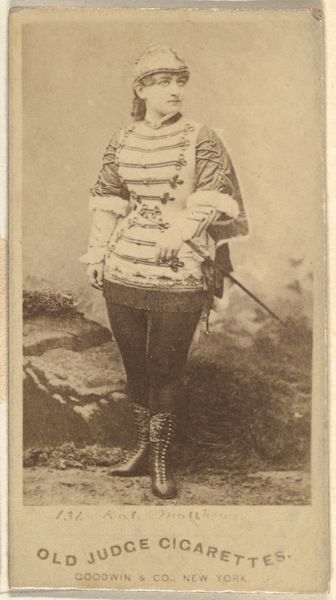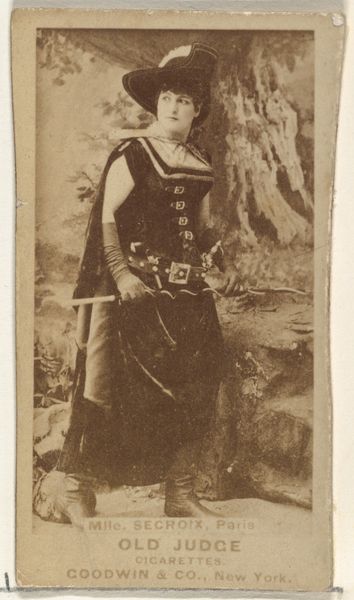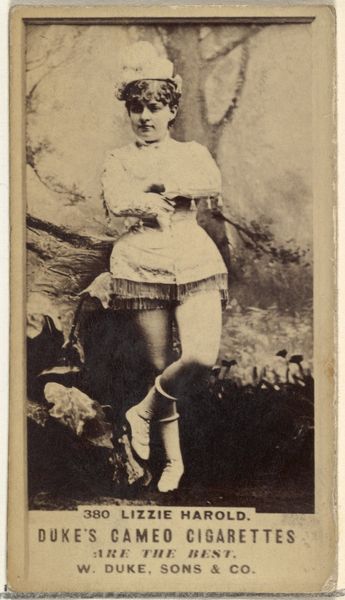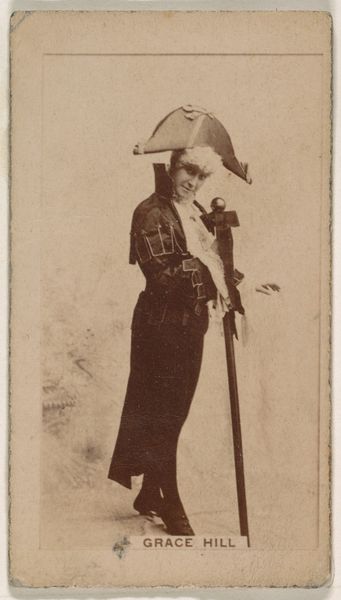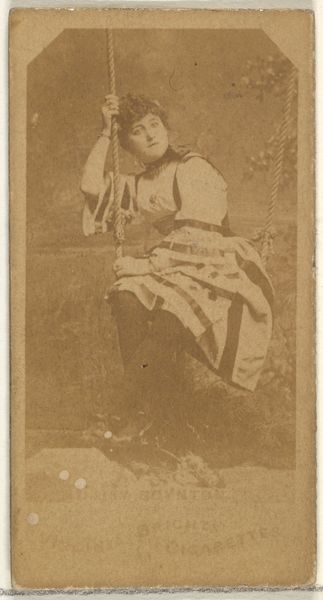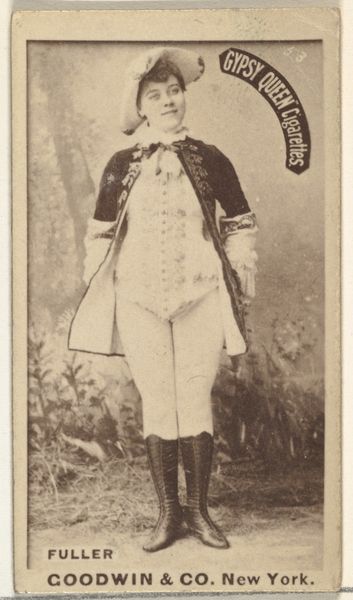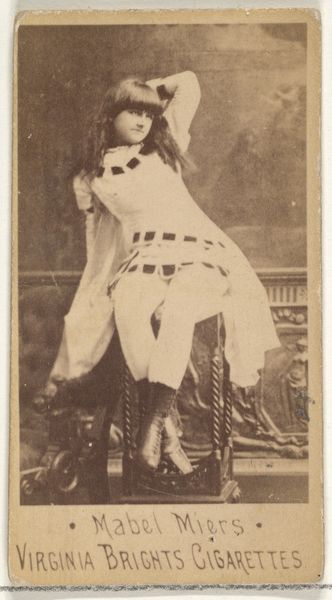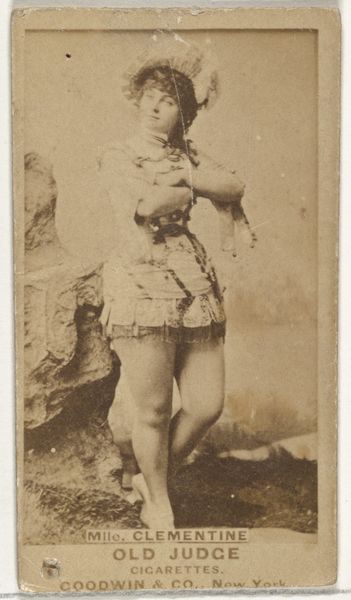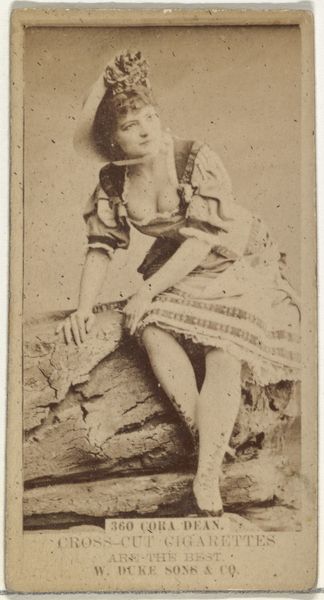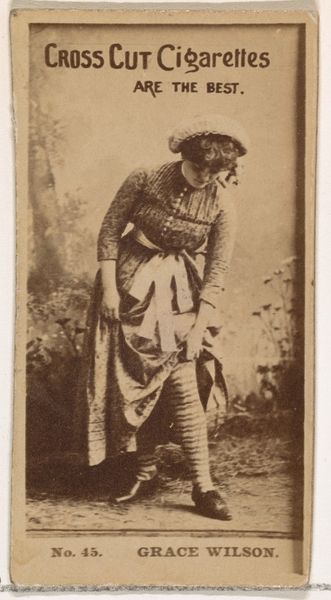
Card Number 587, Lillian Grubb, from the Actors and Actresses series (N145-3) issued by Duke Sons & Co. to promote Cross Cut Cigarettes 1880s
0:00
0:00
drawing, print, photography
#
portrait
#
drawing
# print
#
photography
#
19th century
Dimensions: Sheet: 2 11/16 × 1 3/8 in. (6.8 × 3.5 cm)
Copyright: Public Domain
Curator: Here we have Card Number 587 from the Actors and Actresses series issued by Duke Sons & Co. sometime in the 1880s. It features Lillian Grubb. Editor: She looks… coquettish? Almost like she’s in costume, perhaps from a play? I'm intrigued by the textures, the visible grain, of what is, essentially, a commercial object. Curator: Exactly. These cards were meant to promote Cross Cut Cigarettes. Notice how it was circulated: tucked into packs of cigarettes. It makes you consider art's role within a burgeoning consumer culture. It would have been instantly disposable yet... survives to be exhibited in a place like the Metropolitan Museum of Art. Editor: The labor behind these pieces is something I find important. The whole industrial machine needed to create, print, and disseminate these at mass scale; consider also the labor to grow and process the tobacco! Even Lillian’s costume speaks to it, possibly mass-produced herself? Curator: The choice of imagery is also crucial. The image itself, originally a photograph, reproduced in multiple to reach the public, shaped ideas about celebrity and aspiration. These actresses, often from working-class backgrounds themselves, embodied social mobility. The fact that the subject in the photograph is even wearing a corset is culturally significant of gender expectations during the 19th century. Editor: You bring up an interesting point about aspiration and labour. Mass production brings material to the masses, and here we are seeing labour within and without the card as image and product. The use of photography transformed the concept of reproducibility itself, shifting power dynamics between artist, sitter, and audience. Curator: It certainly democratized access to imagery, changing who was seen and who was doing the seeing. And in that, maybe there's more potential than disposability in a cigarette card. Editor: I think you're right, Curator. When you pull back the layers it's obvious that we can interpret the processes to appreciate this form of production, mass consumption, labor and history.
Comments
No comments
Be the first to comment and join the conversation on the ultimate creative platform.
